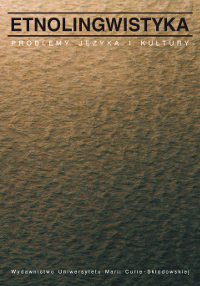WPŁYW PRZESZŁOŚCI NA JĘZYKOWY OBRAZ ŚMIERCI LUDZI I ZWIERZĄT W POLSZCZYŹNIE
THE INFLUENCE OF THE PAST ON THE LINGUISTIC PICTURE OF DEATH OF PEOPLE AND ANIMALS IN POLISH
Author(s): Anna Burzyńska, Jan KamienieckiSubject(s): Anthropology, Language studies, Language and Literature Studies, Applied Linguistics
Published by: Wydawnictwo Naukowe Uniwersytetu Marii Curie-Sklodowskiej
Keywords: etymology; Linguistic Worldview; Slavonic beliefs; death; the death of people and animals; wind – soul
Summary/Abstract: The paper is an attempt a linguistically-based reconstruction of the schema for the conceptualization of death in Polish. The perspective of the research on the contemporary understanding of death is broadened through several factors. These include the etymological exploration of the Polish lexemes of śmierć ('death'), umrzeć ('to die'), zdechnąć ('to die' in the case of animals or with disrespect about people), the ancient tradition, Slavonic beliefs (the concepts of the soul as breath, wind and the association of wind-soul-last breath which binds all three) as well as the Christian viewpoint. Already in pre-Slavonic reality there existed a linguistic mechanism of weakening and alleviating the terror of death, deducible from the basic meaning of the root *mrl- 'destroy'. The original etymological model death is evil (destruction) is continued as a linguistic model death is an enemy, which is in turn reevaluated into death is a friend. The contemporary fashion of defining the concept of death is based on concrete elements. As it is typical of the 20th-century medicalization, it allows one to advance a hypothesis of a similar understanding of the death of animals and people.
Journal: Etnolingwistyka. Problemy Języka I Kultury
- Issue Year: 9/1998
- Issue No: 10
- Page Range: 81-92
- Page Count: 12
- Language: Polish

